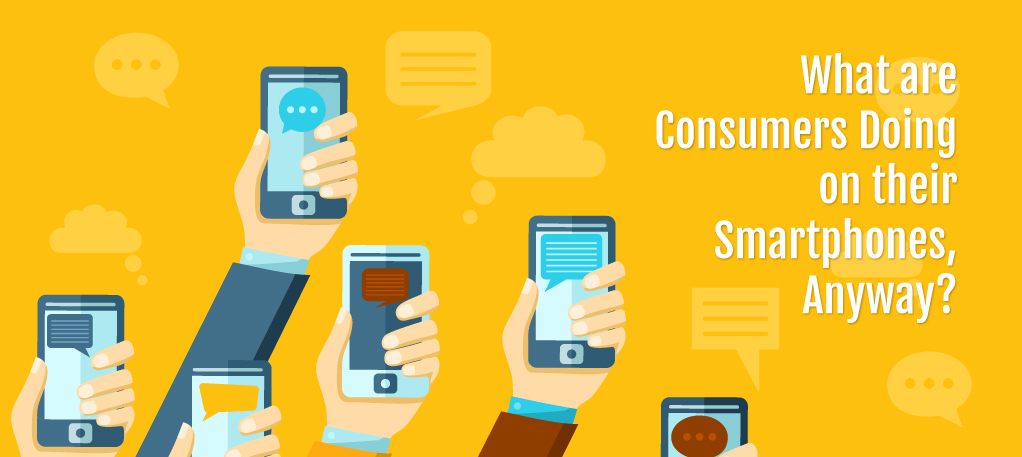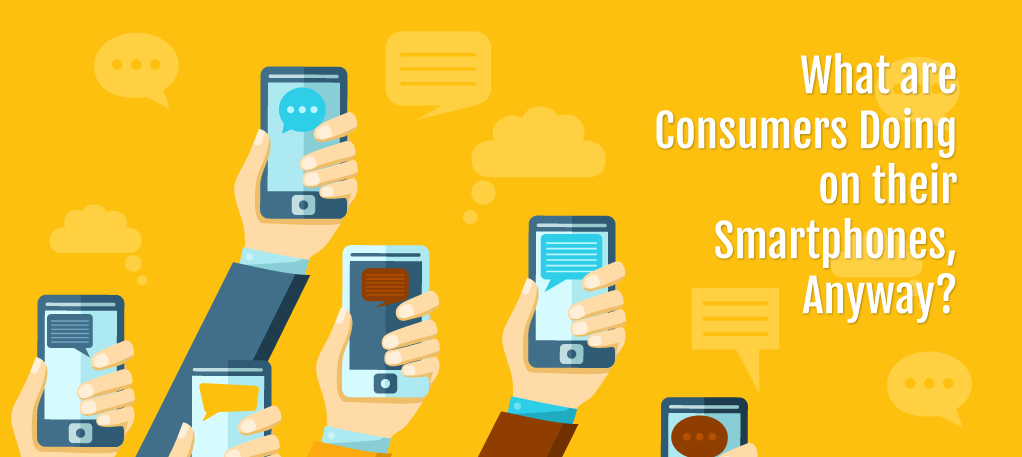What are Consumers Doing on their Smartphones, Anyway?

by Scott Edmonds, Salesforce
Consumer are constantly evolving but what about marketers? They’re wishing consumers would slow down a bit because change can be expensive. Most marketers are still crawling across the “digital transformation” finish line–they’ve only just implemented mobile friendly sites, personalization, and marketing automation.
But today, email is still king – it’s a cross-device channel and unique ID used by 3.7 billion people worldwide – but will it still be on reigning the throne tomorrow? A growing portion of the population already wants to hear from marketers elsewhere. Marketers who want to reach them must start paying closer attention, because each of their consumer segments are migrating to their respective channels of choice.
Raise your hand if you DON’T own a smartphone
Phones are the portals through which consumers access the world. They’re for navigating, communicating, finding first dates, and asking the important questions, like, “What is Bitcoin?” Yet, it isn’t all sunshine and rainbows.
Consumers are nothing short of addicted to smart devices, and they know it. An entire cottage industry has sprung up for apps that limit the usage of other apps. But while the relationship is complicated, smartphones have undeniably become extensions of us. So what do we do when we’re on them?
What consumers are really doing on their smartphones
To marketers who have just completed big, arduous mobile optimization projects, you have my sympathy: consumers aren’t surfing the mobile web. Even though mobile web usage surpassed that of desktop in 2014, it’s dwarfed by time spent in apps. For every minute consumers spend surfing the web on their phones, they spend six minutes in apps.
What are they doing on those apps anyway? According to Google, the number one smartphone activity outside of work is shopping. According to a Deloitte survey, 57% get their news on apps, 45% listen to music, and 31% stream films. 29% use their phones as digital wallets, even when purchasing in-store. Many use them as smart assistants and a growing number use them to hail transportation.
But the granddaddy of all use cases is, without question, communication. In 2016, messaging and social media app usage grew nearly 4x. The next time you’re commuting or waiting in line, glance over and see what people are doing on their phones. There’s a good chance they have a messaging app open.
But there’s more. The big four messaging apps have eclipsed the big four social networks in size and are outpacing them in growth. Facebook owns the biggest two messengers – Facebook Messenger and WhatsApp – both with around 1.3 billion users.
Part of the messaging craze is that consumers, increasingly tired of social broadcasts, prefer one-to-one communication. This is especially true with younger generations, who value privacy. It’s why Facebook launched Messenger, why Twitter launched DM, why Instagram is considering a standalone messaging app, and probably why Snapchat reached IPO. Some, like Facebook Messenger, boast an unheard of open-rate of 90 percent.
And for marketers, there should be something satisfyingly familiar about direct messaging: it’s a lot like email. Many of the same rules apply. Only, messaging apps are unspoiled inboxes that consumers still trust.
Will your communications evolve too?
Many consumers still prefer email and many will always prefer it. But some segments of consumers want to engage elsewhere. They want to pay retailers with digital wallets like Venmo, get their airline ticket confirmation by direct message via Twitter, and retrieve the hat they lost to a ride-hailing service with WhatsApp.
Savvy marketers willing to adapt have spotted these channels of choice and have already begun to build audiences off email. B2B marketers are moving their mailing lists to messenger channels that offer more interactivity. Retailers send coupons and flash sale alerts to loyal fans on Facebook Messenger. Sports teams post stats and engage fans in real-time on WhatsApp. And publishers circumvent inboxes to send alerts that actually get read.
You may not be able to stop consumers from changing. But if you know what they’re doing on their smartphones, at least you can adapt to their channels of choice.
Lava is an authorised Salesforce Partner in Malaysia and has more than a decade of experience in cloud solutions which includes marketing automation, CRM implementation, change management, and consultation. We pride ourselves in not just being a CRM partner but in also understanding the needs of our customers and taking their business to the next level

